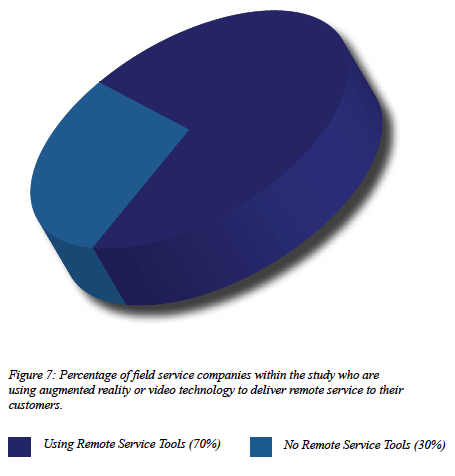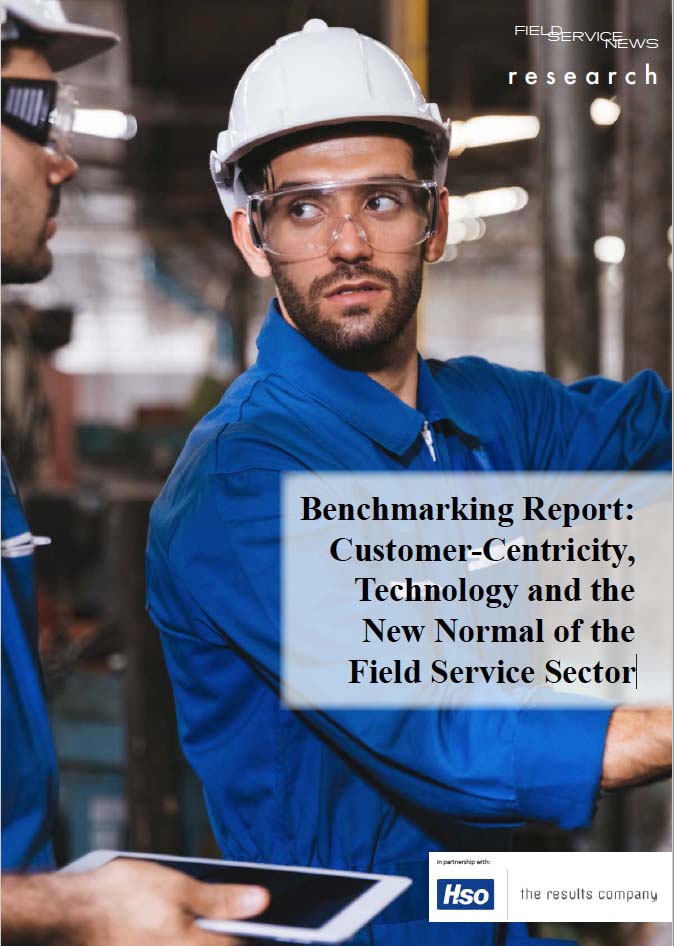Is your technology letting your customers down?
In the previous features in this series, we have seen how the study findings identified the critical importance of CSAT metrics within field service operations.
We have also explored the most prevalent tools being used to measure CSAT and how field service companies are collecting customer feedback…
While this is all beneficial information, it is also very reactive analysis. It helps us understand how companies are monitoring the past performance of their service operation in terms of customer service.
However, in this study, we also wanted to understand how field service companies are proactively driving improvements in their field service operations both today and in the future.
To begin this next phase of the analysis we asked our respondents to identify which tools they are using to drive improvements in customer service. The results were interesting in that it is clear that the use of technology in this manner is widely adopted.
We listed the following technologies and asked our respondents to list any that they used and felt would drive customer service standards:
- Customer portal for appointment booking
- Chat-bots
- Omni-channel contact centres
- Real-time updates of engineer location for customers
- Remote service offering (Augmented Reality)
- Remote service offering (Video)
- Dynamic Scheduling
- Engineer access to parts ordering
- Integrated CRM
- Artificial Intelligence enhanced triage
- Knowledge base for customers self-help
Of these technologies (figure 6, below), the most commonly cited were Knowledge base for customers’ self-help (48%), Integrated CRM (41%), customer portals for appointment booking (39%), Engineer access to parts ordering (39%) and remote service offering (video) (38%).

However, close to a third of companies also stated that they were using Remote Service Offerings (Augmented Reality) (32%), Dynamic Scheduling (30%), and real-time updates of engineer location for customers (30%).
Technologies that would be deemed more advanced, however, were still reasonably prevalent, with between a quarter and a fifth of companies stating they have the following in use: Omni-channel contact centres (24%), Artificial Intelligence based triage (21%) and chat-bots (18%).
Several interesting points of note can be taken from the findings of this particular section of the study.
Firstly, it is interesting to note the weighting of technologies centred around giving the customer more control within the service cycle. The presence of both customer-centric knowledge bases and also customer portals would indicate that this is a trend that has firmly taken root within service strategies.
Secondly, the prevalence of remote service delivery has also become firmly established within our sector. If we look at the two remote service offering options available (video and augmented reality), 70% of field service companies within this response set appear to have remote service capabilities (figure 7, below).

This is very much in line with previous Field Service News Research studies.
We have seen 76% of field service companies stating they have remote service capabilities in a benchmarking study from late 2020 and 83% of companies stating the same in a study focused on remote service at the beginning of 2021.
The difference between the headline statistics from the two preceding studies was that these studies allowed for any form of remote service delivery, including more rudimentary means of doing so (i.e. phone-based delivery of remote service).
However, while this study remains in line with the overarching trends of those studies, what we see here is the rapid emergence of technology supporting such approaches, particularly in the use of Augmented Reality, which we have seen an increase from 21% at the beginning of the year to 32% just six months later.
It must, of course, be noted that the response groups were different; however, both response groups comprised of similar respondent personas and were of a reasonable sample size to indicate that this is a continuing trend that we began to see emerge as a response to the challenges of the pandemic.
In terms of more traditional on-site field service delivery, the alignment of improving customer satisfaction levels and driving internal efficiencies is also evidenced from this set of study responses.
Engineer access to parts ordering, for example, will improve the Mean Time to Repair ratio, driving service costs down and CSAT up. Similarly, the use of Dynamic Scheduling will mean an improved technician utilisation rate for the service provider and reduce any potential delays to meeting customer appointments.
Finally, it is interesting to see that even the technologies that were not too long ago only utilised by a small group of bleeding-edge early adopters have become relatively prevalent in their use.
In particular, omnichannel contact centres and artificial intelligence-based triage are technologies that enhance the customer experience and begin to connect the dots of the service cycle in a much more efficient and holistic manner.

This content is available exclusively for FSN Premium members. Please either log-in or subscribe for access


